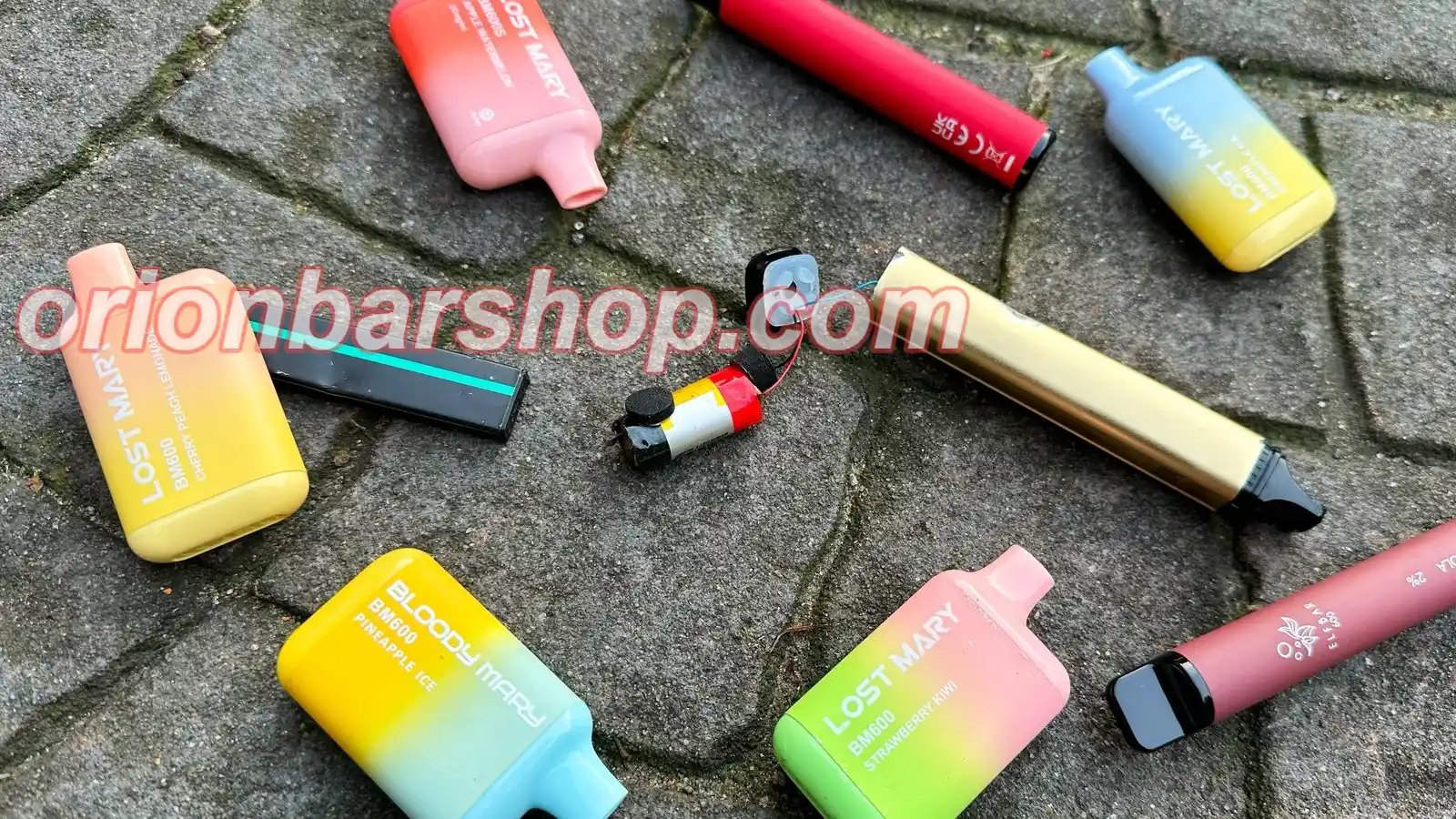The Rise of Low-Nicotine Vapes: A Vape Changer in the Vape Industry
The Rise of Low-Nicotine Vapes: A Vape Changer in the Vape Industry
As the world continues to ramp up anti-smoking efforts, vapes have emerged as a less harmful alternative for smokers looking to quit or reduce their consumption of traditional cigarettes. This growing trend has sparked significant interest, especially as more consumers become health-conscious and seek ways to break free from nicotine addiction. In response, low-nicotine vapes have emerged as a hot topic in the industry, giving brands a new challenge—and opportunity—to innovate. These products are designed to cater to those who want to reduce their nicotine intake but aren't ready to quit entirely. The shift to low-nicotine options is not just about health; it's also a strategic move that reflects evolving regulatory landscapes and consumer preferences. Let’s dive deep into why low-nicotine vapes are gaining traction and how they could reshape the future of the vaping industry.
The Rise of Low-Nicotine Vapes: A Trend to Watch in 2024
Over the past few years, the vape industry has seen a whirlwind of change. From traditional vaping devices to a growing array of new products—including disposable vapes and hookah-style vapes—this market is constantly evolving, providing consumers with more choices than ever before. But perhaps one of the most exciting developments in 2024 has been the rise of low-nicotine vapes. These products are not just about reducing harm—they represent a shift in consumer desires for healthier, more flexible options.
In late 2024, the vape market saw an unmistakable trend toward lower nicotine concentrations, particularly in the hookah-style vape products that began flooding the market. Many of these new devices feature nicotine levels far below the industry norm, with some offering nicotine-free options altogether. Major vape brands like HQD, Oxbar, Lost Mary, and VOZOL led the charge by releasing their own low-nicotine products to meet the growing demand. For example, Lost Mary teamed up with Urban Tale to launch the E-hookah 26K, which contains just 0.6% nicotine, while VOZOL's Gear Shisha 40000 went even further, reducing nicotine levels to a mere 0.5%. These bold moves reflect a growing preference for milder options, catering to those who want the experience of vaping without the heavy nicotine hit.
As health-conscious consumers continue to seek alternatives to traditional cigarettes, the push for low-nicotine products has turned into a full-blown trend. Vape companies are not just responding to a demand for safer alternatives; they're leading the charge in creating products that appeal to a new wave of more health-conscious smokers.
Consumers Are Here for Low-Nicotine Vapes: A Growing Support Base
The low-nicotine vape trend isn’t just a passing fad; consumers are actively supporting these products, and the numbers speak for themselves. In a recent survey conducted by the industry, it was found that 59.23% of users expressed their approval of low-nicotine vape options. A significant 33.48% of those surveyed called these products "innovative" and predicted they would set the tone for the future of the vape market. Meanwhile, another 25.75% said they were keeping a close eye on these products, believing they have strong potential to grow in the marketplace. Who’s your reliable helper? It’s definitely Lost Vape Lightrise Tb 18k!
While the reception has been largely positive, not everyone is convinced. Around 21.46% of respondents questioned whether these low-nicotine products would ever break into the mainstream. These skeptics argue that low-nicotine vapes might remain a niche option for a select group of consumers, rather than a product with mass appeal. Nevertheless, the fact that so many consumers are open to or already embracing low-nicotine options shows that the demand for healthier alternatives is real—and it’s only going to grow.
So, will low-nicotine vapes take over the market, or will they remain an obscure corner of the vaping world? Only time will tell, but the signs are pointing toward a major shift in consumer behavior.
Big Tobacco Joins the Low-Nicotine Movement
In another major industry development, global tobacco giant British American Tobacco (BAT) made headlines by launching a zero-nicotine vape product in the United States. Through its subsidiary, Reynolds American, BAT introduced a new vape brand called Sensa, which is designed specifically for adult smokers who want to enjoy the sensation of vaping without any nicotine at all. This new product aims to provide more choices for consumers who are interested in flavor without the addictive substance.
Reynolds American, which has a strong foothold in the U.S. vape market with its Vuse brand, saw an opportunity to offer a nicotine-free option for adult smokers. According to Valerie Mras, the Senior VP of Vuse, this move is based on a deep understanding of consumer needs and is expected to give the company a competitive edge in the global market. The Sensa product line features child-proof mechanisms to prevent accidental use and supports sustainable recycling efforts through the Call2Recycle program. The vape’s flavors are specifically designed for adult tastes, ensuring that it doesn’t appeal to underage users, with all marketing and website content strictly age-gated.
BAT’s Sensa launch is not just a response to consumer demand; it’s also part of a larger industry trend where traditional tobacco companies are shifting their focus toward less harmful alternatives to traditional cigarettes. As governments worldwide crack down on cigarette sales and push for stricter regulations on nicotine products, low-nicotine and nicotine-free vapes may become essential to their long-term survival.
Big Brands Are Betting on Low-Nicotine Vapes
As the demand for low-nicotine products grows, more and more major vape brands are jumping on the bandwagon. GeekBar, Raz, and several other popular brands are also rolling out nicotine-free versions of their flagship products. These offerings are practically identical to their regular counterparts in terms of design and features, but the nicotine content has been reduced to zero. It’s clear that these brands see the growing popularity of low-nicotine options as a key part of their business strategies moving forward.
The competition in the low-nicotine space is heating up, and it’s clear that vape companies are willing to innovate in order to stay ahead. The more brands invest in the research and development of low-nicotine products, the more the industry as a whole will benefit from the advances in flavor, safety, and performance.
Regulations Pave the Way for Low-Nicotine Vapes
As if the demand from consumers wasn’t enough, increasing global regulations on vaping products are also fueling the rise of low-nicotine vapes. Countries and regions around the world are tightening their control over vaping products, limiting the amount of nicotine that can be present in e-liquids. For example, the European Union’s Tobacco Products Directive has set limits on nicotine concentrations in vapes, making it more challenging for companies to offer high-nicotine products.
In response to these regulatory challenges, many companies are pivoting toward low-nicotine options in order to remain compliant and meet the growing demand for safer alternatives. As these regulations become more common across the globe, we can expect to see even more innovation in the low-nicotine space. In fact, the low-nicotine market might eventually become the dominant segment in the vaping industry, driven by both consumer demand and regulatory pressure.
The Future of Low-Nicotine Vapes: Healthier Alternatives, Better Technology
Looking ahead, the future of low-nicotine vapes appears incredibly promising. As consumers continue to prioritize health and wellness, and as regulations push companies to produce safer alternatives, low-nicotine products will likely become the mainstream choice. These vapes aren’t just a tool for smokers looking to quit—they represent a healthier way to enjoy the act of vaping while reducing the risks associated with nicotine. Want to explore the world of vapes? orion bar flavors keeps you at the forefront!
At the same time, technological advances in vape technology will continue to improve the flavor, safety, and ease of use of these products. Expect even more refined experiences, with better battery life, superior vapor production, and an even broader array of flavors. As vapes continue to evolve, they will likely become a preferred choice for smokers looking to reduce their nicotine consumption without compromising on taste or satisfaction.
In the coming years, low-nicotine vapes could emerge as the most viable solution for those looking to quit smoking. With improved product offerings and an increasing focus on health-conscious choices, this segment of the vaping industry is primed for growth. The future of vaping could very well be nicotine-free—and it looks like it's here to stay.

In conclusion, the rise of low-nicotine vapes represents a major shift in the vaping industry. With more brands joining the movement, an increasing consumer demand, and tighter regulatory oversight, these products are poised to redefine the way we think about vaping. Whether you’re trying to quit smoking or simply looking for a healthier option, low-nicotine vapes are becoming the go-to choice for many. Stay tuned, because the future of vaping is about to get a lot less addictive—and a lot more flavorful.

